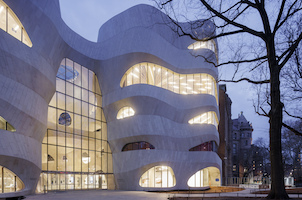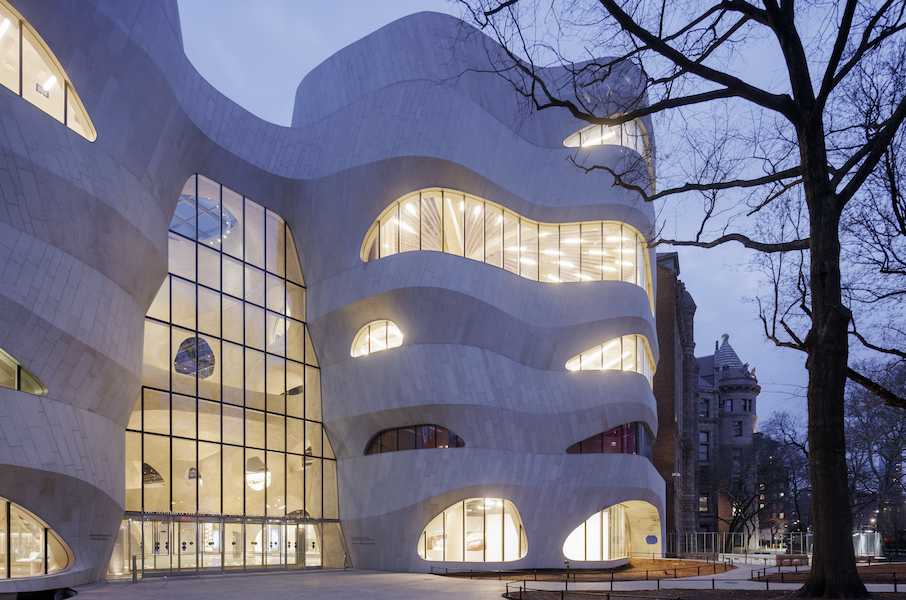
NEW YORK (AP) – The American Museum of Natural History in New York is set to open its new building, a sweeping piece of architecture designed to connect visitors with their place in the natural world.
Tiny ants march along a glass bridge overhead in the new museum wing, The Richard Gilder Center for Science, Education and Innovation. Giant whales swoop along the walls in an immersive video display. And the building’s natural curves – inspired by canyons in the Southwest – are meant to highlight how all of it is intertwined.
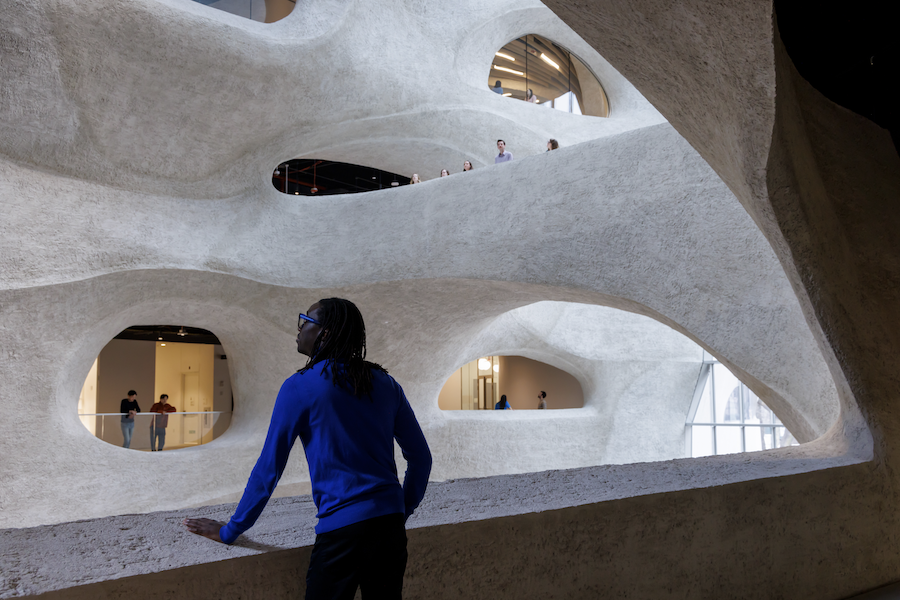
The $465 million center, nearly a decade in the making, is set to open to the public May 4, adding a new wow factor to one of the world’s most-visited museums.
Architect Jeanne Gang said at a media preview April 26 that she asked herself how the space could contribute to peoples’ natural desire to learn. “This led us to look at geological landscapes, where one can see how the natural forces actually shape the material, shape our world,” she said.
The Gilder Center is already home to more than a half million tiny inhabitants, residents of an insect exhibition with 18 species of live critters, and an indoor garden where visitors can mingle with hundreds of moths and butterflies.
The goal is to get people “up close and personal” with the bugs and highlight their importance to the natural world, said museum entomologist David Grimaldi.
“Insects get a very bad rap because of this tiny, tiny fraction of biting or disease-transmitting insects,” Grimaldi said. But most insect species pose no danger to humans and are an essential part of their bigger ecosystems, he said.
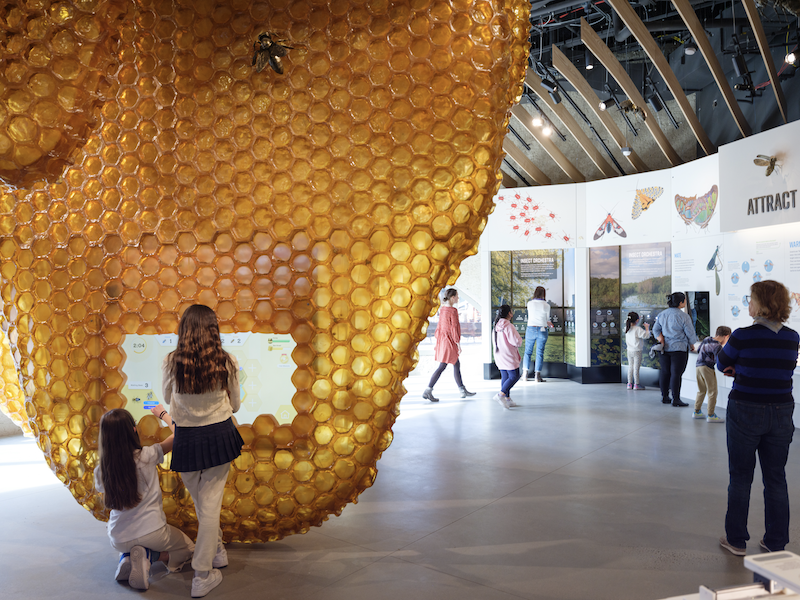
Brightly colored butterflies flap around a garden – which is kept hot and humid to mimic their tropical homes – while giant beetles munch on decaying fruit.
And then there are the ants: The museum shipped in around 500,000 leafcutter ants to build a massive colony in the insectarium. The tiny workers collect their leaves from one glass enclosure, then march across a skybridge to cultivate their fungal feasts in big glass bulbs along the wall.
The ants needed some help adjusting to the space: scientists had to hold “training sessions” to show them where to go, said Cheryl Hayashi, the museum’s provost of science. They’ve since settled into their new home.
A new interactive show highlights the ways our lives are intertwined with others. Invisible Worlds immerses visitors in different interactive scenes, alternately zooming in to show the proteins in human DNA and neural connections in the brain, or zooming out to a vantage point above the New York City skyline or a rainforest canopy.
“Through DNA, you are related to all life on Earth,” the narration declares.
The Gilder Center is also designed to bring the scientific process to the forefront, said museum president Sean Decatur.
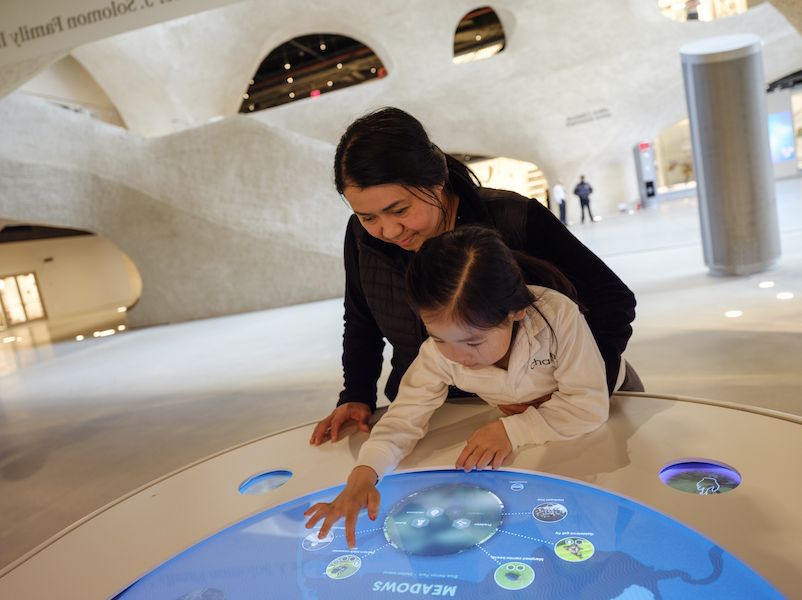
More than four million specimens from the museum’s collections are now being housed in the Gilder Center, some on display through big glass windows.
This Collections Core shows off a wide range of items, from megalodon teeth to Mayan bricks to spools of spider silk, and gives visitors a peek at the stuff the science is based on: “We literally show our evidence,” Hayashi said.
Building trust in the scientific process is more important than ever, said Ellen Futter, the museum’s former president who oversaw most of the Gilder Center’s creation before retiring in March.
“That is the vision: To help visitors see and understand our world more deeply,” Futter said. “To appreciate that all life is interdependent. To trust science and to be inspired to protect our precious planet.”
___
By MADDIE BURAKOFF, AP Science Writer
The Associated Press Health and Science Department receives support from the Howard Hughes Medical Institute’s Science and Educational Media Group. The AP is solely responsible for all content.
Copyright 2023 Associated Press. All rights reserved. This information may not be published, broadcast, rewritten, or redistributed.


